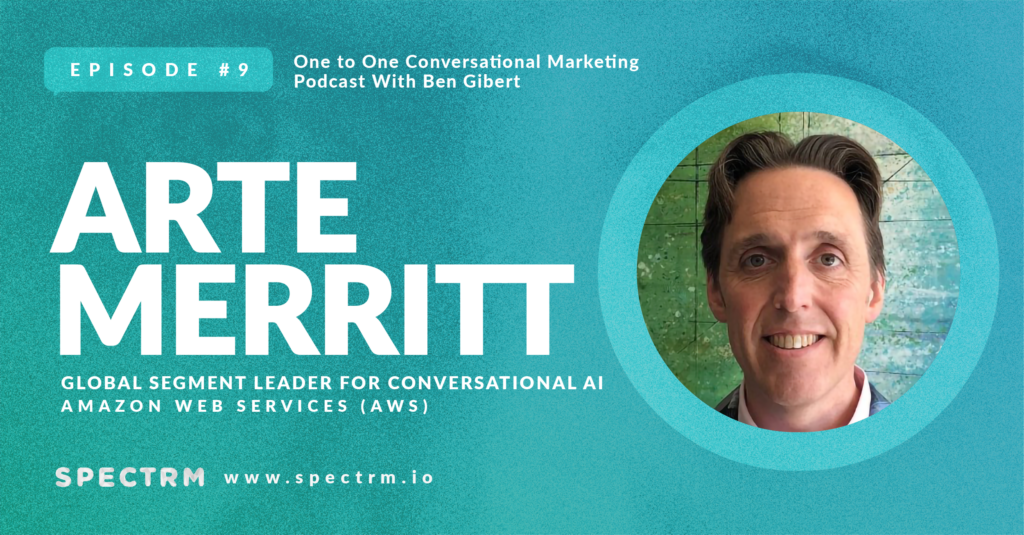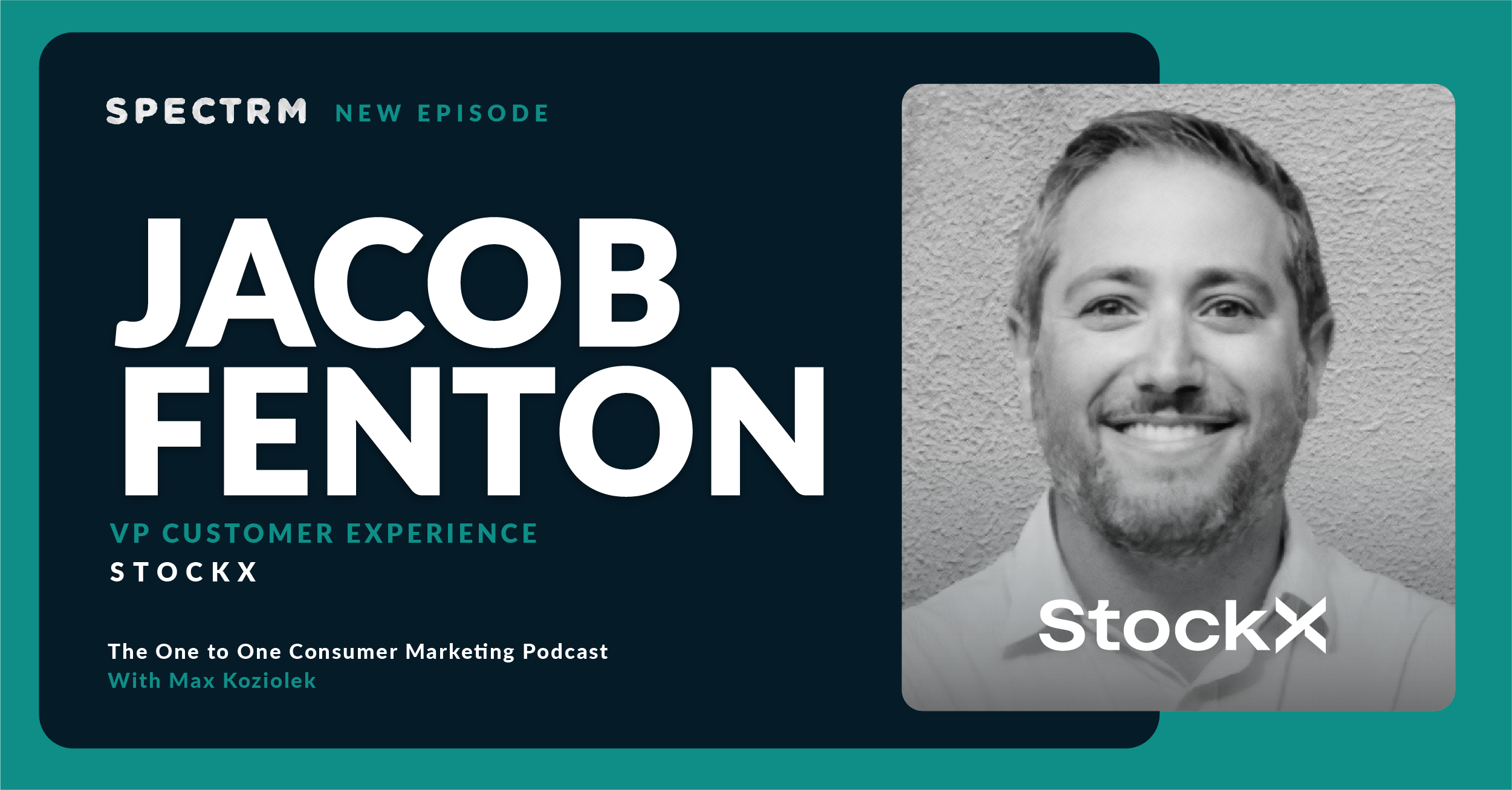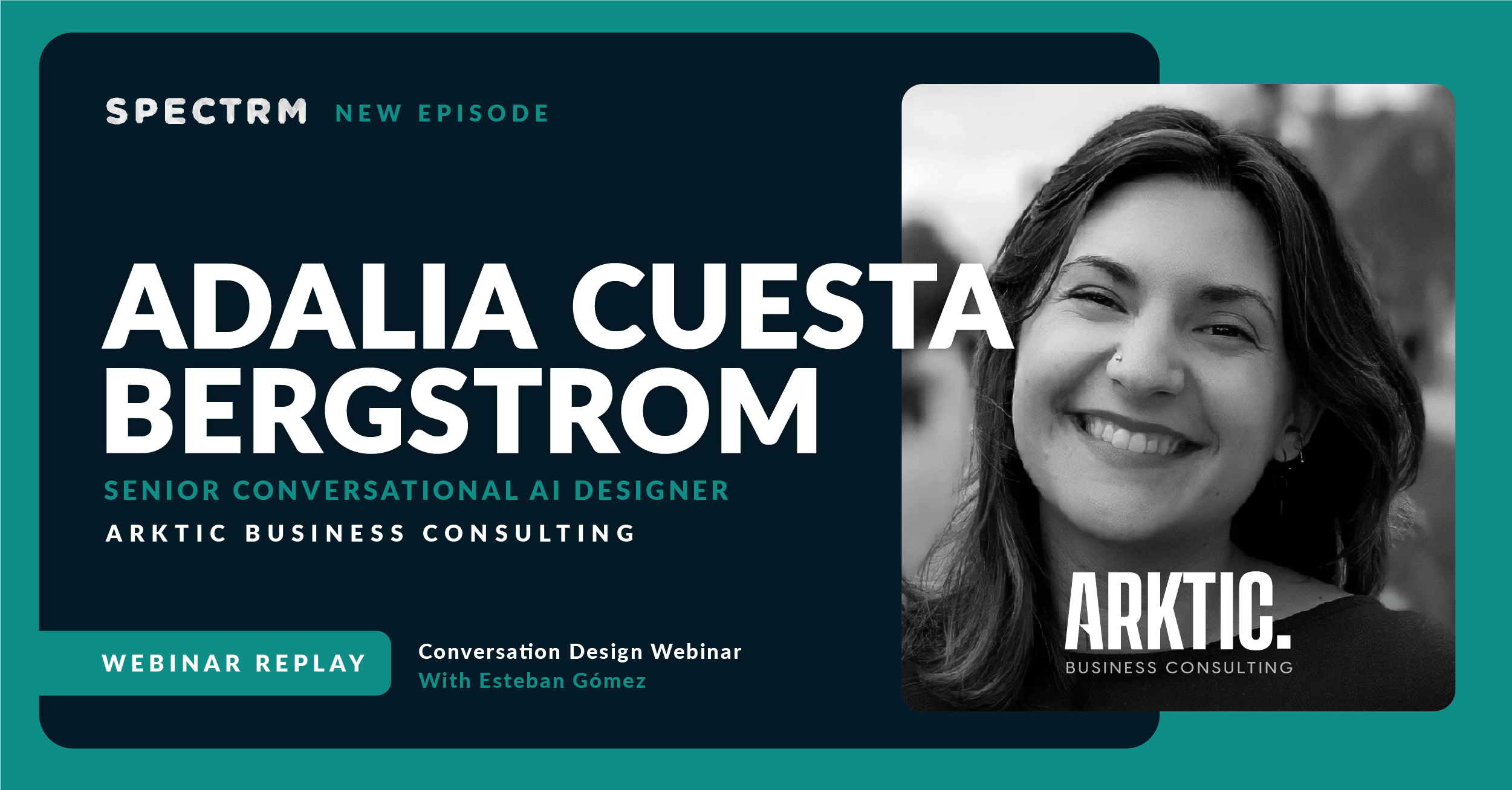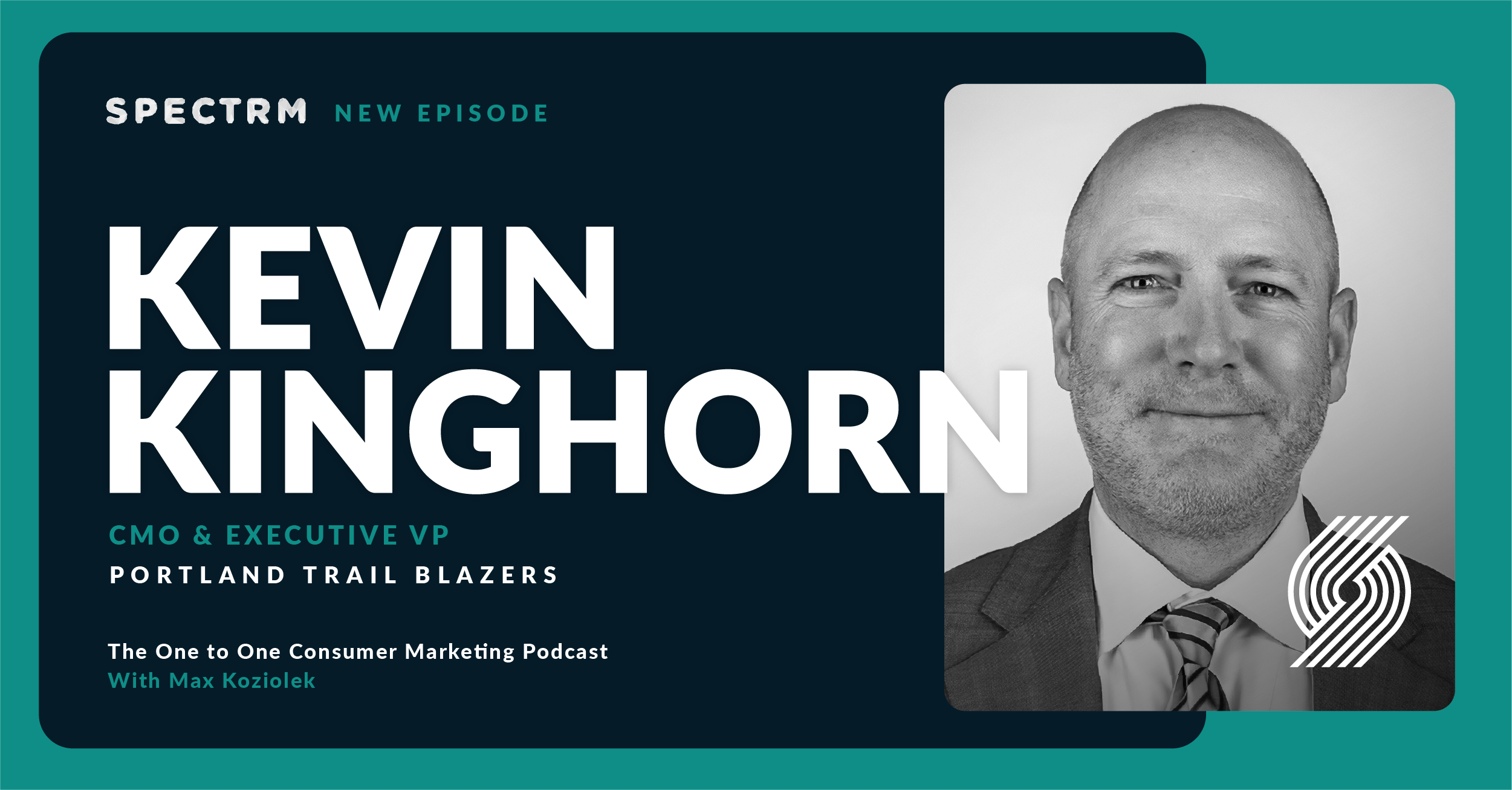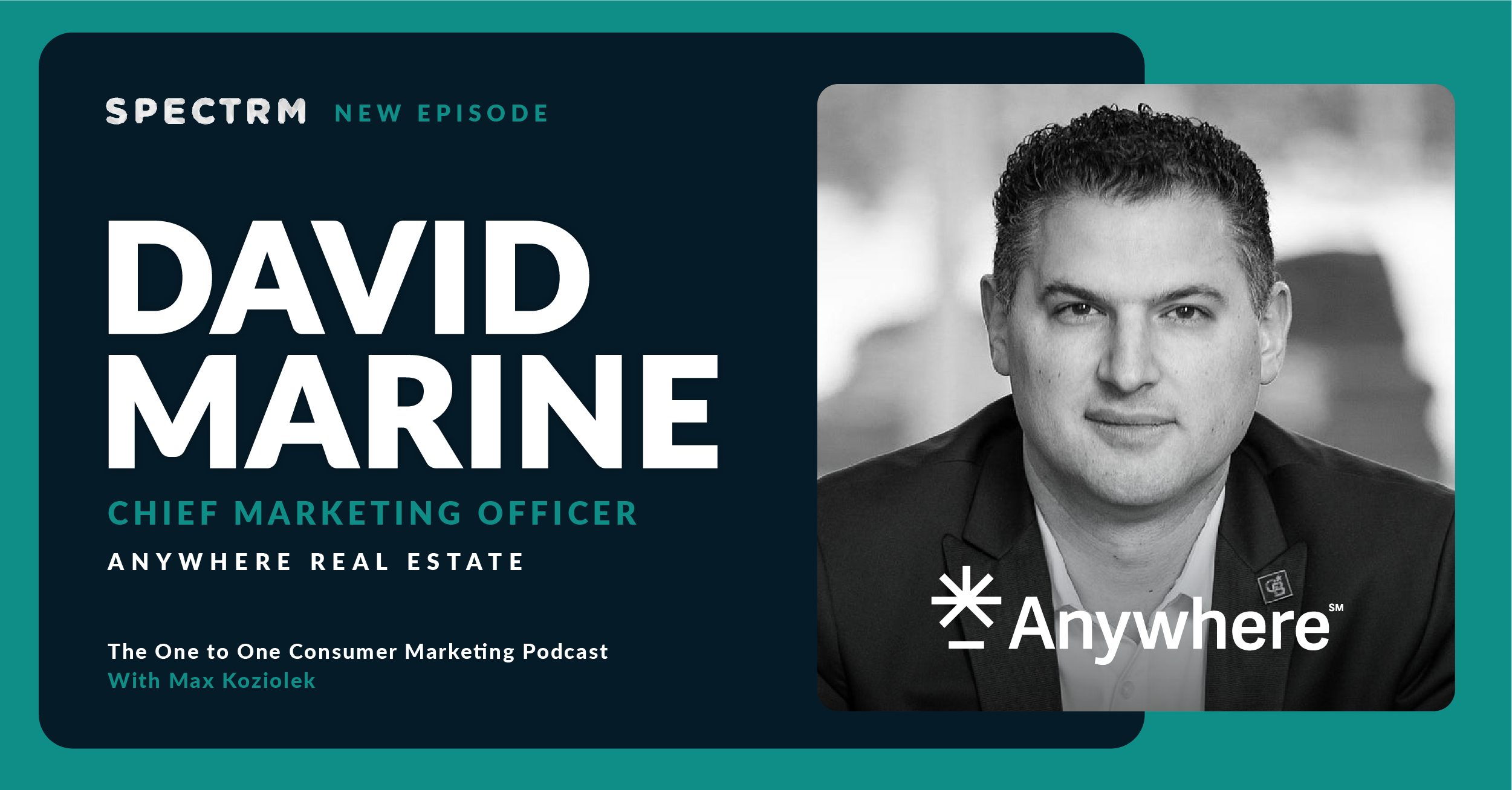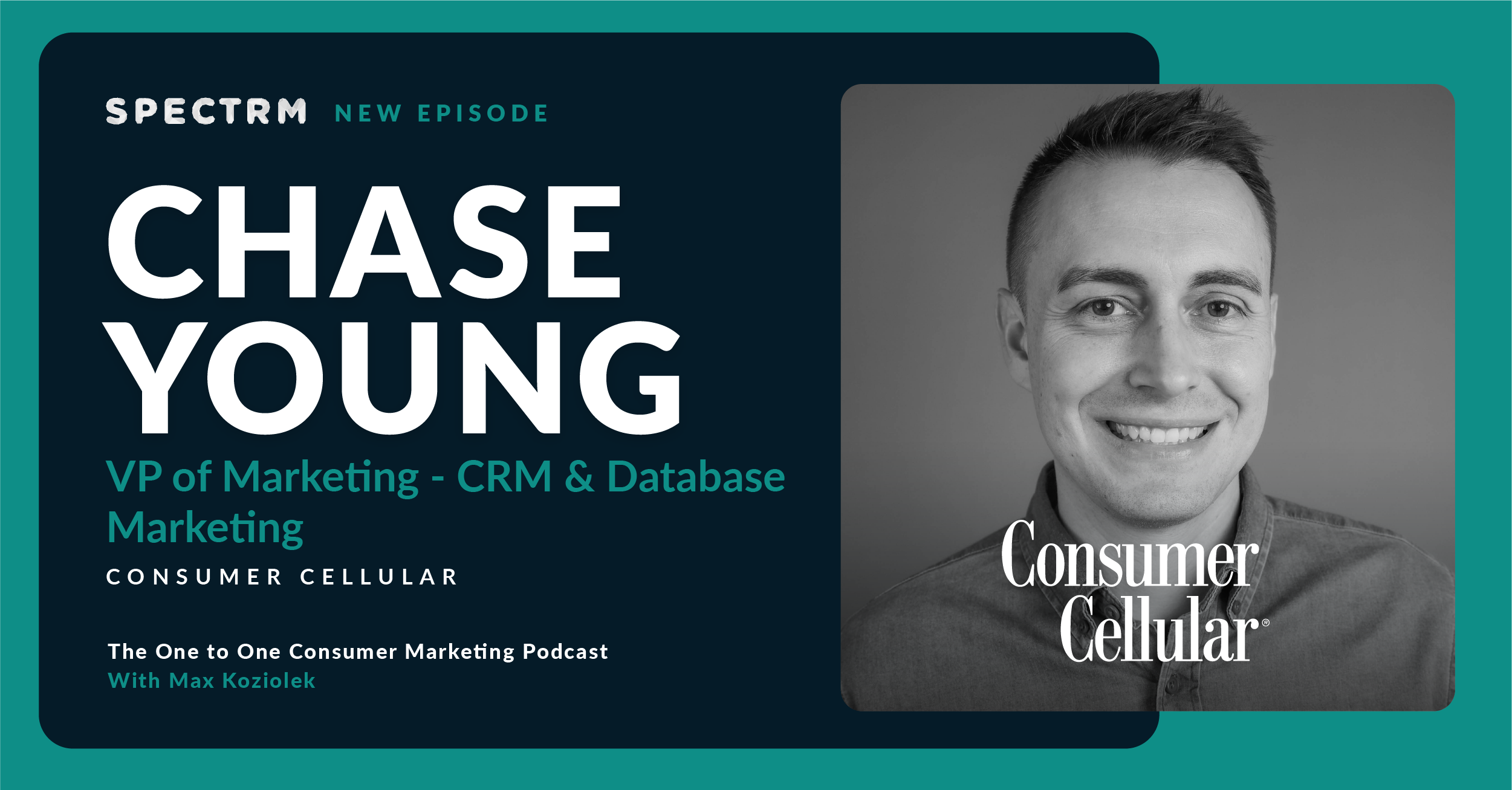Summary
On this episode of One-to-One Conversational Marketing, Ben speaks with Arte Merritt who leads Conversational AI Partnerships at AWS. Arte is formerly the CEO and Co-founder of Dashbot, an analytics platform for chatbots and voice assistants, which he led to 20,000 customers, 90 billion messages processed, and multiple acquisition offers.
Previously, Arte founded the mobile analytics platform, Motally, which he led to a successful exit via sale to Nokia. Arte has more than 25 years experience in the analytics space, working with companies like Yahoo Mobile, Turner Broadcasting, and a wide variety of startups. Arte is an MIT alum.
Topics discussed
- The importance of analytics to see how people are interacting in conversational channels
- The power of unstructured data gathered from chatbots
- What excites Arte the most about conversational analytics to help brands fill the gap and learn from how people are interacting
- Examples of what a true multimodal experience looks like and tips for how brands can leverage those interactions
- The power of NLP for document processing, image recognition, and more
- The framework Arte uses to manage multimodal interaction complexity when dealing with different partners
- Multi-bot orchestration based on persona use cases and context
- What channels Arte is seeing work best and which ones he’s most excited about
- Tips for how global brands can benefit from a multichannel approach
- Why brands should focus on training algorithms over time to better identify customer intent
Guest biography
With conversation, it's quite a bit different. Like with web and mobile, there's only so many buttons and links you can click, but with conversation, people can say whatever they want, so it's hard to build for that and know what they might say. The analytics are quite important there to see how people are interacting, what are they saying, how is the chat pod or voice assistant responding? And improve that. It's all unstructured data and they're providing quite a bit of additional information you wouldn't normally get from just those button clicks and link clicks in web and mobile.

- Arte Merritt is a marketing, partnership, business development, and product leader in the conversational AI industry.
- He was the co-founder and CEO of Dashbot – the leading analytics platform for conversational interfaces which he led to 20,000 customers, 90 billion messages process, $1M ARR, and multiple acquisition offers.
- His annual Superbot conference was one of the most well recognized events in the chatbot and voice assistant space.
- In the midst of a global pandemic, Arte led business development efforts to increase revenues setting company on pace for 100% ARR growth.
- Previously, Arte founded the mobile analytics platform, Motally, which he led to a successful exit via sale to Nokia. Arte built the first version of Motally, got the initial customers, and raised a Series A round as a sole entrepreneur.
- As an active member of the startup community, Arte helped launch two startup accelerator programs, Turner Broadcasting’s Media Camp and Mobile Monday’s Momentum, which he co-founded, and is a mentor in Orange’s accelerator Orange Fab.
- Arte is a frequent author and speaker on conversational interfaces and data insights
Company overview
Amazon Web Services provides a highly reliable, scalable, low-cost infrastructure platform in the cloud that powers hundreds of thousands of businesses in 190 countries around the world. With data center locations in the U.S., Europe, Singapore, and Japan, customers across all industries are taking advantage of our low cost, elastic, open and flexible, secure platform.
Industry: IT services and consulting | www.aws.amazon.com
Subscribe to the podcast newsletter
Transcript
00:00
Welcome to One to One: The Conversational Marketing podcast dedicated to helping modern marketing teams succeed in a messaging first and privacy first world. In each episode, we’ll interview a marketer who is winning with conversational marketing to distill best practices, lessons learned, and actionable takeaways. Here’s your host, Ben Gibert, VP of Marketing, Spectrm.
00:33
Ben Gibert
Hey, everyone, and thanks for listening and watching one to one, the Conversational Marketing Podcast. Today I’m speaking with Arte Merritt, he’s global segment leader for Conversational AI at AWS at Amazon, and also the co founder and CEO of Dashbot, a chatbot analytics platform for conversational AI. Interfaces, chatbots, and voice assistants. Arte, thanks for chatting with me today.
00:58
Arte Merritt
I appreciate being part of this. Thanks for having me.
01:02
Ben Gibert
Yeah, I’m excited about this one. I think you have a breadth of experience that allows you to speak to a lot of different topics that are interesting to our audience. I think before we dig into some of that, why don’t we start with you telling more about yourself, your background, and kind of your journey to starting dashboard and working at Amazon.
01:23
Arte Merritt
Yeah, definitely. As you mentioned, I’m already married and lead in the Conversational AI partnerships at AWS. Prior to this, I was the founder and CEO of analytics platform, dashboard for chatbots voice assistants IVR. Yeah, going back like early 2016, I was looking at Slack chat bots and realized the analytics were missing. I had reached out to a friend of mine to see if he was up for building the analytics. Come to find out he and his friend were in the midst of building a chat bot on Slack and realized the analytics were missing too. So they were looking for something. I said, hey, stop building your chat bot, let’s focus on the analytics. It just went like gangbusters ever since. What interested me with this is prior to that, I had a mobile analytics company and that one went fairly well. Sold it to Nokia.
02:17
Arte Merritt
With conversation, it’s quite a bit different. Like with web and mobile, there’s only so many buttons and links you can click, but with conversation, people can say whatever they want, so it’s hard to build for that and know what they might say. The analytics are quite important there to see how people are interacting, what are they saying, how is the chat pod or voice assistant responding? And improve that. It’s all unstructured data and they’re providing quite a bit of additional information you wouldn’t normally get from just those button clicks and link clicks in web and mobile.
02:53
Ben Gibert
Nice. Yeah, interesting. You started in the kind of messaging space with Slack analytics and then that kind of was the door segue into looking into conversational interfaces and more like the data that’s being generated with those interactions.
03:08
Arte Merritt
Oh, yeah, sorry. It was the slack bots. The chatbots within Slack yeah, we launched initially with Slack and Facebook Messenger because at about the same time facebook opened up to have messenger chat bots. For the first year and a half, those were all the rage, the Facebook Messenger bots. Folks started shifting to voice assistants. I’m not going to say the name because it’s going to trigger it behind me, but Amazon’s Voice Assistant as well as Google’s, and that became quite popular for maybe the next year or so. You’re talking about 20, 16, 17 facebook messenger bots were really big and then 20, 17, 18 it’s the devices. What we really saw is where things started to really take off is on the customer service side of things. Chat bots, virtual assistants, IVR for customer service, that’s where enterprises were putting in a decent amount of resources and revenues.
04:14
Arte Merritt
Overall, like a big believer in this space. I think conversational AI is really our conversational interfaces. It’s really the way it’s a natural evolution of how humans interact with computers. If you think of all the videos of two year olds swiping on the iPhone and iPad years ago, the same thing happens with devices. Like, hopefully it doesn’t go off. The kids already know how to interact with those. So it’s definitely an exciting space.
04:42
Ben Gibert
Yeah, that’s true. It’s like the way that we interface with machines, with technology is rapidly changing and I think kids grasp that a lot faster than anyone. I’m curious in terms of the analytics side of it. You clearly saw an opportunity there, right? Like there’s all this data being generated by these interactions and what excited you the most about getting into the space or filling the gap? What did you feel like brands could do with the information that you’re generating there from the analytics?
05:16
Arte Merritt
Oh yeah, oftentimes folks talk about real time analytics and if you go back to the web and mobile experiences, does it really matter if you have one more click or one more button, press that second real time? Maybe it’s not that important in those situations, but with conversation it is quite important because you can take action immediately. If somebody is conversing with the chatbot and they’re getting stuck or frustrated, or sentiment goes to a particular negative value, you can identify that in real time and take action. In some cases, maybe you have a person enter into that conversation to help the user out, or you can take them down different paths. It was one of the cases where real time analytics is quite important and then because the data is unstructured, users being able to say whatever they like, it’s really important to look at the data to see how they’re interacting.
06:22
Arte Merritt
In a way, your users are almost helping guide the product roadmap because you can see what they’re asking, what they think of the responses afterwards, like people would tell you. You can use that to figure out, like, hey, should I add support or functionality for that in my chat bot? Yeah, the data is quite fascinating and you can use it to improve the NLU models. Seeing where NLU is breaking down with mishandled unhandled intents, you can get an idea of the common reasons why people are interacting with you because they’re telling you. There’s all the basic metrics too, just like the session lengths and all that kind of stuff, like standard analytics.
07:08
Ben Gibert
Yeah, I think you touched on a lot of things there that we see a lot at Spectrm too, which is not so much on the voice side, but on the messaging side, but the same ideas, right. The idea of direct feedback on what you’re getting from customers and also of understanding even within the messaging space, there’s a lot of unstructured data when customers choose to not follow the path that they’re being kind of channeled down by a chat bot. That is almost often the most valuable data.
07:37
Arte Merritt
Right.
07:37
Ben Gibert
The unstructured data is like how customers really want to interact with you or understanding what their intents are things that we’ve seen as really helping brands to develop. Almost like you’re saying like a library of responses or being able to identify, hey, we actually don’t know what this intent is, but clearly a lot of people are asking for it. Let’s build around that and let’s evolve from there. Definitely there’s so much interesting stuff going on there. You’re clearly as conversational AI and partnerships leader at AWS. I’m sure you’re at the forefront of it. How would you kind of summarize the current state of conversational AI today?
08:12
Arte Merritt
We’re definitely making advancements. We’ve gone well past the days of the basic FAQ chatbots. When we first started doing the analytics, often folks weren’t even using NLU. They could do basic decision trees or regular expressions or whatever it is. Folks initially, at least on the customer service side, were probably starting more with the FAQ basic informational chat bots. What I’ve seen over the past year or two are some really cool advancements. The first is with multimodal interfaces and that can mean different things for people. Some folks think of it as like a handoff between voice and text. The true multimodal that gets really exciting is where the voice helps guide someone through a text experience. There’s partners that we work with that say you were to call an airline. If I called the airline and I want to change my seat, if they say, well, seat 20 D is available, what does that mean to me?
09:17
Arte Merritt
I don’t know what that seat is, but if they sent me the seat map at the same time and said, hey, Seat 20 D is available and I can go, oh, that’s the I’m going to click it. Right. Those kind of multimodal that’s keeping the voice and some web or text experience in sync. That is really cool and we’ve seen a lot of interest around that. It makes things easier. It takes full advantage of the device capabilities. The second area we’re seeing quite a bit is additional AI. Beyond nou one of them is making use of say, document processing or image recognition. For example, there was a customer that built a chatbot for onboarding to car insurance and instead of typing your name and address while you’re in the chat, well you can just take a photo of your driver’s license and it’ll extract that information.
10:08
Arte Merritt
If you have an existing insurance policy, similarly take a photo of that and extract the relevant information to make the new policy. That incorporation of additional AI is also quite exciting and one of the trends that we’re starting to see that.
10:23
Ben Gibert
Makes a lot of sense. I guess both things that you meant like the using the different, I guess interfaces, whether it’s voice or a screen or messaging to their advantage by playing to their strengths. Whether it’s like guiding a conversation with voice but then giving the visual by phone. I think that’s a great example or even the blending of the different technologies. We also have seen that with customers that want to build chatbots that then allow people to generate like an augmented reality type personalized product that they can then view in their homes like that thing. I think that’s where we’re seeing things go more and more. Those are like very complex use cases to power. I’m curious how you deal with the complexity when you’re working with different partners. That things that you build a lot kind of custom for each customer or are you building also a kind of framework that you’re able to then apply like plug in different modules to do this thing?
11:18
Arte Merritt
Yeah, that’s a good question. AWS on the partner side. It’s working with partners that do that development. There are ISV partners that’s part of their platform being able to do that multimodal they built that into their platform to enable that kind of interaction. There’s also the consulting partners who would build that more from scratch. Maybe they might have some reusable components but they’re building a custom versus the ISVs that out of the box? You get that but it’s definitely exciting. And there is a third too. I don’t know if you’re seeing this, but this concept called multi bot orchestration. We see a bit of that as well. The idea there is you have a main chat bot that’s the front door interface and that will navigate folks to sub chat bots based on the persona use case, perhaps even language. An example of that could be in banking.
12:27
Arte Merritt
Banking you could have the merchant accounts, the consumer accounts, investment banking accounts. If someone came into the chatbot and said I want to open a new account. Which account do you mean? Right. That main chatbot would understand and know how to navigate the folks to these different sub chat bots. That’s another one that’s kind of interesting too.
12:49
Ben Gibert
When I spoke to the conversational AI and designer at Intuit, they mentioned something similar in terms of multi bot orchestration. That’s something that at Spectrm we’ve also been thinking a lot about. We think of it more in terms of kind of a single bot, but multiple conversation streams and the ability to also recognize context that’s sensitive to what conversation you’re in or what bot you’re in. Simultaneously knowing having more like global templates that recognize out of context what people are asking for and being able to switch across those different bots or streams is so important to provide, I think, what is ultimately like a great customer experience, which is what a lot of these brands are looking for. Right?
13:27
Arte Merritt
Yeah, definitely. You hit it upon the key piece there, the context. So context and personalization are key here. In fact, the more about the user and the context, the less questions you actually have to ask them. If I called United right now, like the airline, they would know who I am and they would ask if I was con about my flight to New York next week. They’re taking that into account so there’s less questions you have to ask. Yeah, that’s definitely key. And then passing that along too. If chat bots are meant to, in some cases at least in the customer service, it’s meant to help reduce load on agents and all. Passing that context along also provides for a better experience. Sorry for the rambling here, but in the customer service space, folks sometimes think of the chatbots just around reducing cost, increasing containment.
14:31
Arte Merritt
It’s really about providing a better user experience. Being available 24/7 on channels, users prefer to interact. Some users prefer text based chat bots, some prefer messenger based ones. Some like to call, like being available where they want to interact with your business. That’s really key.
14:51
Ben Gibert
You hit the nail on the head there too, which is being where customers are, right? Being where they are and being where they want to be. We’re seeing a lot of shift towards these new channels in terms of the preferred way of communicating with brands as well, which I think is very exciting. It’s an exciting opportunity for brands, not just in the service space or customer service space in terms of call, deflection, agent, time reduction, all that stuff. I think also in a marketing space as well.
15:19
Arte Merritt
Right.
15:19
Ben Gibert
Because the ability to identify what customers actually want when they’re engaging there’s, I think often a huge opportunity to see it not just, okay, this is a service ticket, but hey, this is the opportunity to really wow a customer or maybe even recommend something that they didn’t even know they wanted. Providing that very predictive and assistive experience is ultimately generating a lot of value for brands in the space. I mean, you talked about channels the channels that customers prefer to interact on. Can you talk to me about which channels you’re seeing work best or which ones there’s most excitement around.
15:57
Arte Merritt
Yeah, I think at least for me and what I’m seeing with the customers that we talk to, that multimodal experience really resonates. It’s something that folks maybe weren’t initially thinking about. You show them a demo, you see the eyes light up, they’re all excited, like, oh, I didn’t know you could do this. Just think, maybe there’s something where someone’s trying to make a payment and they would have to read out their credit card number. Now all of a sudden, the voice assistant or IVR is sending them the page just to type it in and it makes it easier. Yeah. So multimodal gets people quite excited. I think for particular use cases, there’s probably some channels that might better depending on the business. Go back to the whole Omnichannel customer choice side of things like being available where your users want to interact. Like if you look at especially overseas in China, people are using WeChat in Japan and Taiwan, It’s line, and Latin America, it’s WhatsApp like, the businesses know they need to be on those channels.
17:04
Arte Merritt
That’s where the consumers want to interact with them. They want to do their banking on WhatsApp or whatever the platform is. I look at the data, how people are interacting with you and focusing on those. Some things are, as I just mentioned, like entering your credit card, maybe changing passwords, like all these kind of things are easier to do in a text environment than a voice. Also something to keep in mind, like certain things might better to do in one over the other.
17:40
Ben Gibert
Yeah, okay. Absolutely. Use the right channel for the right function and use case, almost. I guess a lot of excitement in the space around being able to blend those channels or using a multichannel approach to get that information and provide the best experience. I definitely agree with you in terms of your breakdown of the messaging channels globally too. Right. I think that’s one thing for a lot of global brands, when they’re deciding to enter specific markets or you’re thinking you’re working with certain teams there’s usually one channel that’s the obvious contender for what’s going to reach the largest market segment that you’re trying to go after here and to make sure that you are on that channel. I assume that you also probably work with people that are adopting a very global multichannel approach where they might be replicating experiences in WhatsApp onto line or WeChat in other markets.
18:34
Ben Gibert
Right?
18:35
Arte Merritt
Yeah, definitely it goes to that Omnichannel approach and looking where to start in terms of getting started. You often start simple and expand, but seeing how people are interacting or where they want to interact we just ran a survey, so I just got the results back yesterday about where people prefer to interact, but it depends on the use case and all or the industry segment, whether it’s financial services, travel, hospitality, that kind of thing. What was interesting is seeing it in general, at least for a certain age. I think it was everyone under 45, the text based messaging that could include web and mobile chat messenger applications, that kind of thing was preferred over the voice IBR, which was kind of interesting to see. That’s something to as a business, if you’re thinking, where should I start? Should I do convert my voice calls? Or should I just create a chat bot?
19:40
Arte Merritt
That’s something that can be helpful for them when deciding.
19:44
Ben Gibert
Yeah, we’ve actually run quite a few global surveys too, leaning into that exact same question, trying to understand what are the channels that people prefer and then breaking that down demographically. It’s pretty consistent from the results that we’ve seen too, that messaging is often the preferred form of communication, and I think a lot of that has to do with it’s kind of asynchronous. You can come back to it on your own time. You can always drop back in and have all the context of the previous conversation, so you can really scroll through and see that and then continue the conversation. I think obviously voice has a lot of exciting opportunities too, but it lacks some of that and like a phone call, it demands your attention immediately at that moment in time. I think particularly for younger generations, that’s something where we often want to be.
20:34
Ben Gibert
People are doing multiple things at the same time or they want to just be able to come back to that. I think the rise of messaging has actually probably come think to as a surprise for many, just that it’s almost like an old school. It’s like the most basic instant messaging form of communication. The fact that it enables that type of asynchronous communication and also like such a rich visual experience makes it also very attractive to a lot of people. I’m happy to hear that you’re finding the same survey results with different methodologies and locations. I’m sure you’ve touched on a few things that are exciting to you in conversational AI and design in terms of multimodal interfaces, that thing. There anything else that gets you really excited about this space and what’s coming?
21:18
Arte Merritt
Some of the advancements on the NLU or NLG side of things, like people talk about so the natural language generation, like the GPT-3 and these large language models. Some of that stuff pretty neat, seeing how folks leverage it in their chat bots. Maybe not necessarily to respond, but to use it for maybe figuring out the intent. Like an additional layer on top of the Nou to figure. Expand your training phrases that’ll be exciting to see how that progresses. How all the different Nou NLP providers keep improving their offerings, how those continue to expand. It comes down to when you’re building these interfaces, you want to be able to understand the user, respond appropriately, but most importantly, respond in a way that satisfies the user. The tools you can use are getting better and then folks are doing a better job of building the experiences too.
22:22
Arte Merritt
Instead of just getting the I don’t know what you’re asking me, the ones who do it well handle those fallbacks better.
22:31
Ben Gibert
Yeah, I think you touched on something so important there that I think is worth kind of reiterating, which is that some of the really interesting stuff in generative adversarial networks, like all that generative language processing and those technologies is not necessarily in, at least for a business case for now is not in generating the copy that you’re going to respond to people with, but in actually better training the algorithms to identify specific intents or to help. Brands that this is a new space, so a lot of brands will get into this and they have little to no messaging data to train any kind of intent algorithm on. Right. Helping to develop what are all the possible permutations of this particular intent? How can we train that with maybe both machine learning and human supervision to really better train the algorithms over time is a really exciting space that is kind of more in the background in the sense that I think a lot of the hype you see online is like, oh, this AI generated this article.
23:31
Ben Gibert
Or like, I can talk to an AI generated chat bot. I think the way that brands are using this, at least right now, is in a lot of the things that you’re saying, right? Like mining the data that’s coming in, using it to improve how they understand customers, but ultimately they’re still scripting responses because they want to be very careful in the way that they’re interacting with their brands or their customers.
23:52
Arte Merritt
Yeah, totally. There’s a few times your customers, we chatting with some customers that are newer to the space, like, oh yeah, you can use the natural language generation to generate these, but you’re like, no, you want the response for your company. Right? Like you wanted to respond appropriately. I did a panel years ago, and I remember there was someone on the panel, they said that the reason why the company was using chatbots and they liked it is part of it was because of compliance. The chatbot is only going to respond with what it was programmed to respond in the content that it was programmed to respond. Whereas if someone was chatting with a live person or talking to the live person, they might go off script, they knew they’re more compliant with that particular industry.
24:43
Ben Gibert
That’s a good example. One that I like from a marketing standpoint too, is you can really only learn in a direct response way, okay, how are people engaging with certain messaging, or when you’re responding to customers, what is causing more conversions? Or what’s driving the action that you want? With live agents? You’re creating just like a chaos of unstructured data that you can’t do anything with. If you structure it within a messaging context, you then can learn so much more about those messaging interactions. I think there’s a lot of exciting use cases there as well. I mean, maybe more on the marketing side or just for businesses in general. What are kind of the top three pieces of advice you would give for brands that are just getting started with conversational AI?
25:31
Arte Merritt
It’s hard to just come down to three, because when you’re building these, generally, even when we’re evaluating partners, we look at four key areas around the NLU models. How folks go about selecting the use cases, creating those models, training phrases. There’s the conversation design and flow like were talking about, like an intuitive interface that responds in a way that satisfies the user. There’s all the back end integrations that you want to do, and then there’s the testing monitoring measurement. I would say start simple, pick a use case or so one to start with. Folks often refer to that high volume, low complexity kind of task. Start there and see how people interact and start getting the data. Some of the things we talked about in terms of the conversation design, it’s really important to leverage context and personalization. As I mentioned, the more about the user and what they’re doing or any of that context, the less questions you have to ask in the flow.
26:36
Arte Merritt
It’s really helpful to welcome the user and set expectations a bit about what the experience can do. You really need to set a way to handle those fallbacks appropriately beyond just the, I don’t know, messages, like something to get people back on, like the happy path or leveraging knowledge bases or something to help the user out. The last thing I’d say is you definitely have to look at the data and the analytics to see how people are interacting. What are they saying? Maybe there’s additional intents you want to add support for. Maybe you need to adjust your intent, model nou model as it is, and just look at that data and keep iterating start simple, make an intuitive flow as best you can, and look at the data and iterate I think those.
27:25
Ben Gibert
Are three very good pieces of advice. I feel like some of the things you mentioned are exactly the kind of best practices that we also recommend starting simple with a very focused use case. Like you said, that almost the 80 20 rule, right? I was like, you’re going to solve most things with this core use case and you can build from there. It’s important to limit the scope of what you’re doing to actually get something out there. It’s all about testing and learning, as you’re saying, and the fallbacks are an important one. Right. Setting expectations, I think that’s so key for brands when they’re engaging in this very private space with consumers, which can build a lot of amazing brand affinity if you get it right. It can go wrong if you get it wrong. Make sure that they know they’re talking to about set expectations for what the experience can provide for them.
28:15
Ben Gibert
If they don’t get it, we always tell customers, use it as an opportunity to create a funny moment or something. Right. Throw a GIF in the conversation and say, sorry, I didn’t get that, I’m a bot, help me out here. Don’t try to pretend like you’re a human or try to just be as honest and direct in that interaction as possible.
28:37
Arte Merritt
Yeah, that’s fair. The neat thing about the conversational interfaces is people will tell you what they want and then they tell you what they think of it afterwards. So you get pretty good feedback. Going back to the web mobile. You wouldn’t necessarily get like, well, they click this button, they click that link. But were they happy with that?
28:57
Ben Gibert
Yeah, that’s such a key part of improving the experience over time, right. Which is really the goal here, I think. As we wrap up, you’ve mentioned a lot of big things are on the horizon about what excites you or what you’re seeing in the space. Can you maybe give your prediction five years from now, what is the future going to look like for conversational AI or maybe even further into the future?
29:23
Arte Merritt
Well, it’s eventually a big believer in conversational AI, and really it’s the natural way people interact. It’d be interesting to see over the next five years how it’s implemented in more and more services, not just like it was brought up a lot of customer service experience. Obviously there’s the marketing side that you’re talking about too, how it can help marketers. Even say, instead of pressing the elevator button, I can say, call the elevator, I want to go to floor three, or whatever it is. You can see voice assistance being used in different use cases. I’m excited to see more about the natural language generation, how folks use that and leverage it, and then to see how the NLU NLP providers continue to improve and better understand folks intent. Overall, I just want to see more excited to see how people leverage these things. I used to do these panel, we do panels of folks that were building chat bots and voice assistants.
30:28
Arte Merritt
I remember there was a person from AOL and he’s talking about the Alexa Google Assistant experiences. He said, well, when movies first came about, people just took the stage play and now they’re like, recording that. It was the same basic thing and you’re just taking what you already know and putting in this new environment. The excitement is when people start to leverage that new environment for different things. Like now in the movies, we have CGI and all this craziness and it’s not like a stage play. How are folks going to leverage conversation for new use cases that we haven’t quite thought of? That’s where it’s exciting to see how things go.
31:11
Ben Gibert
Yeah, that is a very exciting prospect, right. Where the typical human, I guess, reaction to new technologies or new way of interfacing with technology will be to replicate what works in the old systems. What is exciting is what lies ahead is the things that are built natively on those new platforms.
31:30
Arte Merritt
Right.
31:31
Ben Gibert
I think you’re right, that is where there’s going to be a lot of exciting things happening in this space. Arthur, look, I really enjoyed this conversation. I think we got to go into the weeds on some of the more, I guess, not necessarily technical topics, but just things that I don’t always get to talk about when I’m speaking with Marketers on the podcast here. Before we wrap up today, if people want to follow your journey, learn more about what you’re doing at Dashboard and at AWS, can you let them know where to find you on LinkedIn?
32:01
Arte Merritt
It’s just A-R-T-E merit. M-E-R-R-I-T-T yeah, that’s probably the best place to connect or follow. Try to publish a lot of articles myself. Just a way if you’d like to stay in touch and I really appreciate being part of this. Thanks for having me and taking the time to chat.
32:23
Ben Gibert
Yeah, no, it’s been a pleasure. You heard it go to LinkedIn @artemerritt and if you want to stay up to date with what’s going on in the conversational AI space and conversational marketing, obviously, please follow the podcast subscribe on Apple Podcast Spotify or wherever you get your podcast. And check out Spectrm at Spectrm.io. Again, thank you so much. It’s been a pleasure.
32:51
Arte Merritt
Yeah, thank you. I appreciate this. Thanks for taking the time.
